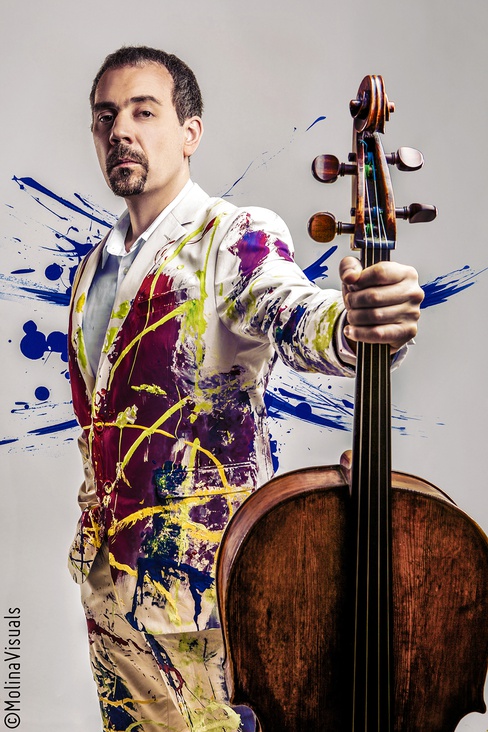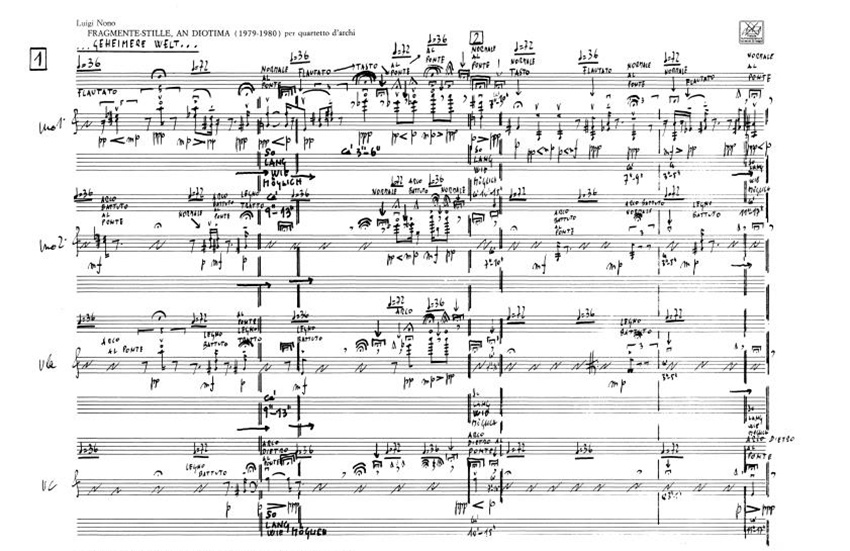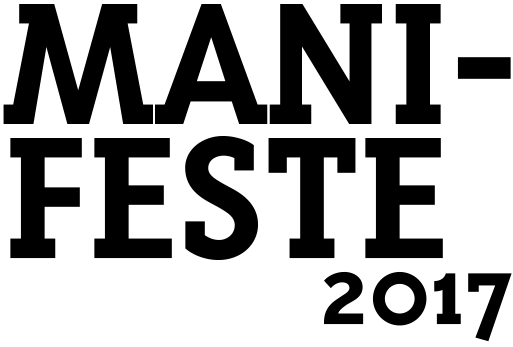
Founded in 1996 by Pierre Morlet, cellist and only member of the original formation, the Diotima quartet celebrated its 21st anniversary last year. The result of a series of events provoked by the Conservatoire national supérieur de musique et de danse de Paris, Diotima first worked on the contemporary repertory, with the will to become the instrument of new composers, before exploring the repertory of the past. An atypical path and a constant journey between centuries, which reflect a commitment to current creations and the desire to highlight the great classic composers who inspire the quartet, particularly Bartók, Debussy and Ravel, the final quartets by Schubert and Beethoven, the composers of the Vienna School or Janácek. Their recordings have recieved several awards (5 Diapason d’or). These privileged interpreters of composers such as Helmut Lachenmann, Toshio Hosokawa, Alberto Posadas, and Rebecca Saunders, and European festivals, Diotima is one of the world’s most requested quartets.
Diotima is a guest at ManiFeste-2017, IRCAM’s multidisciplinary festival and academy. In the Composition Workshop: String Quartet, Chaya Czernowin and the members of the quartet gave to 5 young composers the opportunity to write a new work with or without electronics, to explore and test all the instruments and formation's possibilities together. In parallel, during the Interpretation Master Class: String Quartet, The Diotima quartet offered to young quartets the opportunity to work on the 4th string quartet with electronics by Jonathan Harvey as well as quartets from the 20th century in connection with the new thematic exhibition in the Centre Pompidou Modern collection, entitled « L'Œil écoute ».
Interview de Pierre Morlet
 The advent of electronics – which is a central issue at IRCAM - transforms techniques, playing modes and listening. Today, does its use seem to you necessary, or unavoidable?
The advent of electronics – which is a central issue at IRCAM - transforms techniques, playing modes and listening. Today, does its use seem to you necessary, or unavoidable?
When one is in Paris, it’s impossible to miss out on music with electronics. Music today always tries to open, to widen, to look for new tones. It’s perfectly logical to go towards electronics, and - as a quartet based in Paris - going towards electronics, means coming to IRCAM. Even back when ManiFeste was still called Agora and the Philharmonie de Paris didn’t exist, it was here and at the Centre Pompidou that we could listen to concerts with electronics, for example those of the Ensemble intercontemporain. Paris remains the central place of serious music with electronics and attracts many creators. The American composer Ashley Fure, with whom we will premiere a piece with electronics, had come to IRCAM to follow the Cursus; she now performs between France and the USA. There are also composers who live in Paris and developed an interest in electronics. For the past few years, students from the Conservatoire de Paris can validate a school year by following IRCAM’s Cursus program. Electronics are now well integrated in the musical landscape.
IRCAM is a pride and a unique opportunity. The studios are financed by the state; it’s a real place for research, work, and meetings among very different people. As the composer Philippe Manoury says so well; "at IRCAM, I met everybody".
Pierre Morlet © Molina Visuals
The quartet was established 21 years ago. How did electronics came in your pieces?
Electronics arrived very naturally in our interpretations, it’s a journey one would not think about. Simply because when we are interested in new music, it’s necessary to include all that it has to offer.
Nowadays, music with electronics represents a very important, rather rich and unique repertory. It’s changed a lot these last few years, democratized by software and laptops, letting technologies circulate widely. In a way, it is also IRCAM’s will. Beyond being able to create works in the luxurious conditions available here, it’s essential to have the possibility of playing them somewhere else in the world.
Our project for June 7th at the Centre Pompidou will be performed five or six times this year in France but also in Milan, in Warsaw, etc. And it’s only the beginning because this is in keeping with our politics as a quartet. We rework a project as often as possible, to perfect the score and the interpretation, but also to leave time for the electronics to finalize. It’s often necessary to test various acoustics in several concerts to stabilize it. We saw this with Tensio by Philippe Manoury; for ten concerts, half were needed to complete the electronics. In our current project with Mauro Lanza, the use of the electronics was not initially planned. When at IRCAM he was interested in hybrid instruments, which joins his current research, and suggested integrating them into the string quartet. In contrast, Ashley Fure had wished to integrate the electronics into her score from the beginning.
Do you encourage creations with electronics when commissioning a score?
The choice is left to the composers. We don’t impose any rule - we don’t incite more that we don’t prevent - we remain neutral and open, but always ready to create.
How is the playing style influenced by the existence of electronics?
The string quartet is a formation, it’s also a genre. What characterizes it is its four instruments. Behind them there is a history, which founded a tradition, that of the listening. The idea of a four-part conversation has led to the string quartet creation. The conversation engenders interactions, questions and answers, sometimes rough and sometimes not. Four people on stage are "playing". More than they recite, they play a role, like in theater. With electronics, the notion of conversation is more or less limited. The notions of listening and interaction among four instrumentalists are obviously modified, in the sense that the note played, with a certain intensity or pitch, will be reinterpreted by machines over which we don’t have total control. The loudspeakers which act as a mediator voluntarily transform the sound; there is therefore a necessary adaptation from us. In acoustic parts - whatever their aesthetics - there will undoubtedly be more stability, there are other reflexes.
Is electroacoustic music the future of classical musical instruments?
What we currently do with transducers and hybrid instruments is something which will be well established in about twenty years - or completely abandoned by then.
__________
"Diotima", is on the one hand a reference to German romanticism and on the other hand a commitment to contemporary music. Does the essence of the quartet lie in this journey between repertories?
From the beginning, the desire was not to reference only the 20th century, even if it’s essential. We chose this figure, drawn from Plato’s Banquet, found in the epistolary novel by Hölderlin, a 19th century German poet. Luigi Nono sums up excerpts from these letters and poems in the score of his quartet Fragmente-Stille. Diotima was for us the perfect symbol of universal romanticism, a character who crossed centuries, inspiring poets, writers, as well as musicians.
 Partition de Fragmente-Stille © Universal Music Publishing Ricordi, 1980 - via Benchet 2 - 20121 Milano
Partition de Fragmente-Stille © Universal Music Publishing Ricordi, 1980 - via Benchet 2 - 20121 Milano
The quartet, former genre, sits next to the modernity of electronics, which is easily qualified as “cold”. Is an electronic romanticism possible?
We often say that what is old has a soul, a patina. However, that doesn’t mean that electronics are cold. It’s something alive, in particular because the technologies evolve continuously. I understand perfectly that one could talk about the romanticism of electronics. Technologies move forward at lightning speed and what seems new is quickly anchored in habits, until it becomes obsolete or old-fashioned. It’s in that sense that there is a real romantic gesture, which seems to go beyond the control of the people who made and make the electronics.
When we browse through music from every century, is there a constant, fundamental element that echos through time?
The requirement, the listening. The requirement of listening. The requirement of the composers in what they wrote but also the skills required for the instrumentalist. In the Lachenmann’s playing modes as in the phrasings of Schubert, what is interesting is that they all require perfect control of gesture.
So, in front of a score written by a late composer, how much freeway can you take in your performance?
All the freedom that our knowledge of the score and the universe of a composer allows us to take. Contrary to common beliefs, the freedom will be proportional to the knowledge we have. The broader it is, the more possibilities will be known; while conversely, the more knowledge is restricted, the more possibilities will be restricted too. Faced with old scores, we became aware that certain questions could arise due to our experience and opportunities we have had working on recent scores with their author. It is indeed possible to take liberties with possible options, simply because what is written offers in fact several paths; but also, because a score has several editions, inaccuracies, losses, disappeared traditions. In the case of Opus 135 – the last quartet by Beethoven - several simultaneous editions mean that the indications are never really the same for each movement. This complicates the reading.
It is therefore very interesting to have worked with great masters such as Alberto Posadas, Toshio Hosokawa - who are also guests at ManiFeste this year - or even Helmut Lachenmann. The indications are in perpetual evolution. Supreme example: Pierre Boulez. A few years ago, we found ourselves here, at IRCAM, to work with him on the revision of his quartet "Livre pour Quatuor" that he had written sixty-three years earlier. A lot has happened since then, it’s undeniable! We interpreted the parts a first time. While we played the first movement at the indicated tempo, he realized that he doesn’t like it anymore. He conducted us, we tried again twice below the indicated tempo. We noticed that the “lively and animated” tempo he wanted while listening was a kind of “adagio”. Pierre Boulez then revised a number of things with us over several work sessions. A composer can indeed change opinion on his own music.
The lesson we draw is not that we can change everything on score from past centuries, but to realize that what was written represents, above all, a moment in the composer’s life. There is then the reality of repetitions and rewritings. Without taking the composer’s writing as the absolute truth, what he wrote gives momentum and breath, in touch then with the “principle of audibility”. It is necessary to know how to differentiate on the one hand what is a matter of pure spirit (that is for instance to indicate an extremely fast and incomprehensible tempo), and on the other hand the intelligible, which must try to remember the original spirit, while giving more clarity. For example, if there is a fast tempo with a big breath or impracticable connections, we imagine that the composer wanted to underline the idea of an infinite line. Interesting thing: for some composers, the spirit is sometimes more important than the intelligibility. In fact, our experience with today’s composers allows us to understand to what extent the score is a "tool to transmit"; and how much of a difference there is between an edited score and a manuscript. We did not work with him - sadly! - but the scores published by Franz Schubert don’t faithfully transcribe the flights we can see on his manuscripts, among other things because of the standardization of accents. These teach us sometimes more than the Urtext. And it is through our work with the composers of today that we were able to have the certainty that the composers have sometimes with their score limited tools.
__________
As part of the composition workshop, you will be the first to interpret scores written by the young composers of the academy. They will present you their work and then will realize with you the complexity of the passage to the ear.
Yes, there will be this “principle of reality”. Something was written, but will an instrumentalist with goodwill know to do with it?
The composer will be given advice, but he can also explain his choices. How do you consider this supervision?
Everything will depend on what the composers wrote. We expect them to be capable of telling us that we made a mistake, and to have the requirement we were talking about. We know how to listen and hear, but in return they must know to take into account our remarks when we will talk about forgotten parameters or elements that don’t work. To have an open-mind is an essential criterion, in particular for composers still in training.
In the idea of an exchange and learning, it is necessary to know how to properly critique, to be able to assert a point of view, and sometimes to modify a work. More than knowing if scores are extraordinary, the most important element is situated in this notion of dialogue between the composer and the instrumentalist from which something will inevitably emerge. All the more we can’t remove from Western culture this possibility of arguing, of developing proposals. It’s in the foundation of the first quartets, just like the sonata form: exhibition of two themes, development, and recapitulation
In the description of the workshop, it is specified to “limit the use of accessories and playing styles to explore and test all the instruments and formation's possibilities together”. What does this constraint mean?
The piece we work on for ManiFeste joins this logic of accessories exploration, and playing styles. They are quite in vogue, in particular among young composers to whom we have a rather active commission policy. But for a workshop like this one it seemed important to us to work using reduced material. This is, contrary to popular ideas, conducive to inventiveness and also the starting point of a rich work. It’s the great lesson that we learn from Beethoven, Bartók, or Schoenberg, who are at least the founding pillars of music. More than digging into a multitude of elements, it's preferable to try to set up boundaries, to create something by diverse associations. Parts must also be able to be worked within the time constraints of an academy where each student is supposed to benefit from the same supervision time. We don’t believe that either the quality or the creativity will suffer from it, rather the opposite.
In the interpretation masterclass, the quartets have to choose a work from a list. What will be your teaching method?
They will be completely normal classes, where we will share our experience of the proposed works which are all scores we have even already played or premiered. Liturgia Fractal by Alberto Posadas chosen by one of the quartets interests us particularly because it was our first contact with Alberto a decade ago. The beginning of an immense adventure of which we are extremely proud and happy. It’s important for us for young quartets to include pieces we worked on with the composers in their repertory. It’s essential to pass on our experience and to do so that the scores we played don’t stop with us but go towards new interpretations. And if tomorrow this quartet or another plays a whole cycle by Posadas, we will certainly be present to hear it live because we are the only ones to have played it in its entirety. Thus what is essential for us is the exchange, the transmission.
A part of the works joins the theme of “L’Œil écoute", linked to the new exhibitions in the modern collection at the Centre Pompidou. What relationship do you maintain with other arts?
We are mainly requested for concerts and have only rarely approached other arts or played during a show. We could be tempted by a dance project, in particular together with choreographers working a lot with music, like Ann Teresa De Keersmaeker. This is due to the fact that the quartet stays and has to remain in a specific formation for a concert with its repertory; it’s not a set for contemporary music. Our approach to multidiscipline projects still remains very scattered. However, we are always ready to play with new technologies, the most extreme, most adventurous, and experimental playing modes which exist today. We are extremely interested in it but we also like limiting ourselves to what the quartet is originally.



